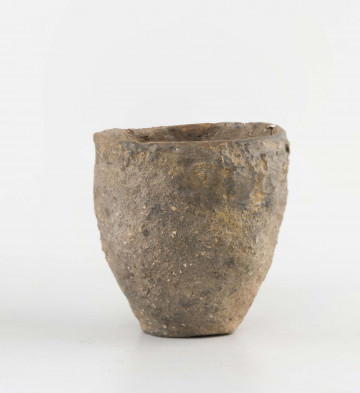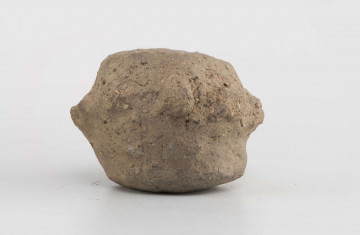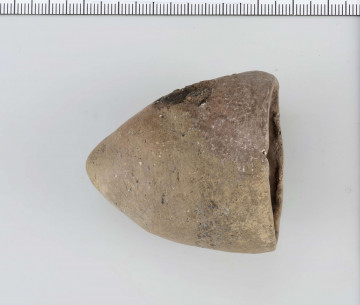
Miniature vessel
National Museum in Lublin
Part of the collection: Set of archaeological relics found in the Lublin Region
In Bielsko (the Opole poviat) archaeologists have come across an interesting relic during the research of a Bronze Age burial ground. It was a horn, made of clay and having small dimensions (only 7 cm long).
As one can see in the photo, the artefact resembles a horn as it has a gently rounded tip, which is bent against the walls. It was made around 3,000 years ago by people who inhabited the present-day territory of Poland, which archaeologists identify as the Lusatian culture.
The technique of making the object was quite simple since it was hand-made from clay mixed with sand, and then burnt in fire. Thanks to this, the horn was more durable and less fluid permeable. It was important as the artefact was undoubtedly made for the consumption of liquids.
The finding of the described relic, as well as many similar ones, in cemeteries which are examined by archaeologists, cause many researchers to put forward hypotheses about the ritual role of this small vessel. During the All Souls' rituals taking place in the cemetery, the people of those times could toast the dead with cones.
Finds of such ceramic products are not limited to cemeteries. They were also found on the remains of settlements, which may indicate that such cones were also used at home, during feasts or meetings.
The construction of the cone is also interesting, as it could not be placed upright, which meant that the drinker had to empty the vessel completely to avoid spilling anything.
Author / creator
Dimensions
cały obiekt: height: 70 mm, width: 34 mm
Object type
dish
Technique
firing
Material
clay
Creation / finding place
Owner
The National Museum in Lublin
Identification number
Location / status

National Museum in Lublin

National Museum in Lublin

National Museum in Lublin
DISCOVER this TOPIC
Museum of King Jan III's Palace at Wilanów
DISCOVER this PATH
Educational path